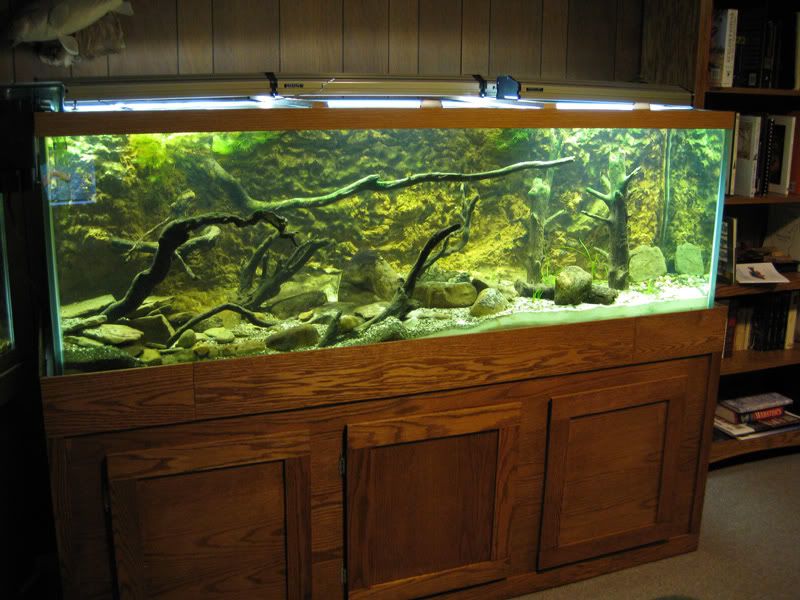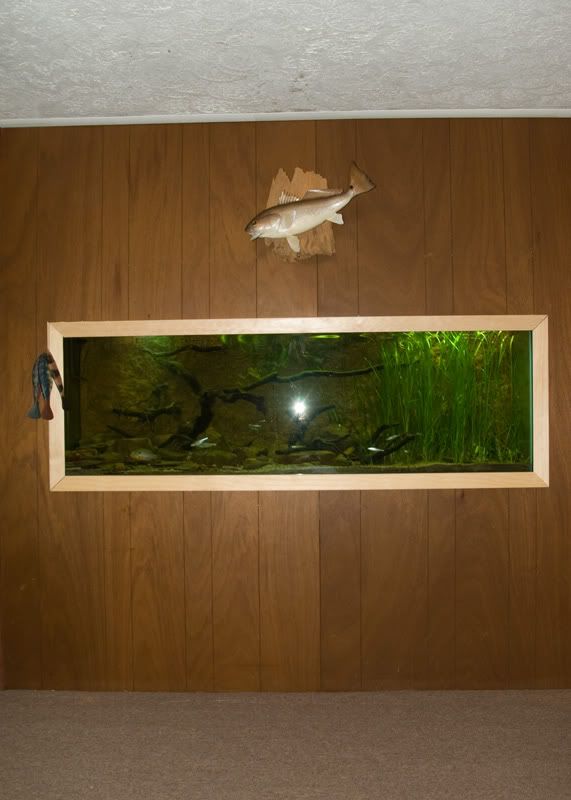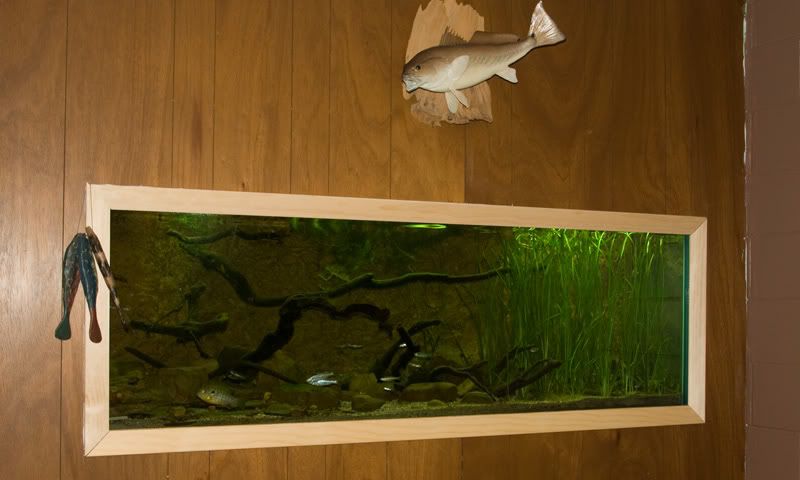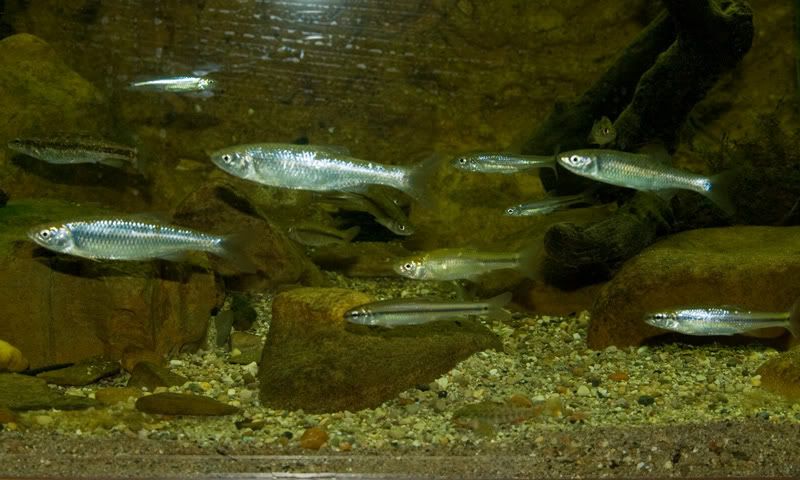
and put it into storage for a few months until I bought a house. Well, now I have a house and built my tank into the wall in the basement. So here it is… my new and improved 180-gallon Ohio native stream tank.
(I still have to stain the trim.)

Here is a side view.

I had to give up most of my fish, which are actually being taken care of really well at a native fish display at one of the nature education centers at my work. I kept some of my favorites in a 10 gallon and then a 40 gallon until the big tank was ready to go. Here are some of the fish, both old and new.
Love this Northern Longear, but I need to get him a little girl.

Some of the minnows.

Some of the darters and one of the baby Orangespot Sunfish.

For those of you who are interested the Fish list right now is pretty small as I have been doing small scale stockings but it includes:
Blacknose Dace
Bluntnose Minnows
Fathead Minnows
Silverjaw Minnows
Sand Shiner
Mimic (or Sand) Shiner
Spotfin Shiners
Logperch
Variegate Darters
Greenside Darters
Johnny Darters
Rainbow Darters
Orangethroat Darters
Fantail Darters
Longear Sunfish
Orangethroat Sunfish
And for those of you interested in the plumbing. The background is Styrofoam and Great Stuff with a coating of Silicon II and sand. There are openings on the left side (looking from the back) which flow up and over into filter media and through a corridor along the back bottom to another chamber with the pumps are kept. A line runs from the pumps to the bed rock/ rock pile where they create more or less 1-way current. Clear as mud?
Here is a picture.

With water flow.

Andy
p.s. On my home computer, when I edited the pictures they were so much lighter than on this computer. Hopefully they show up alright for ya'll.








